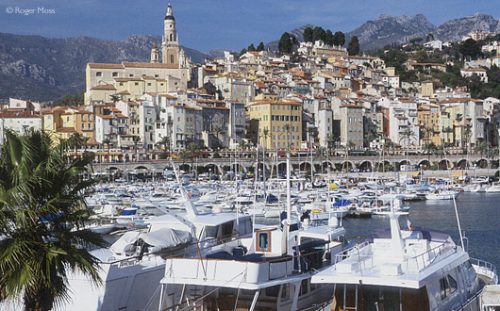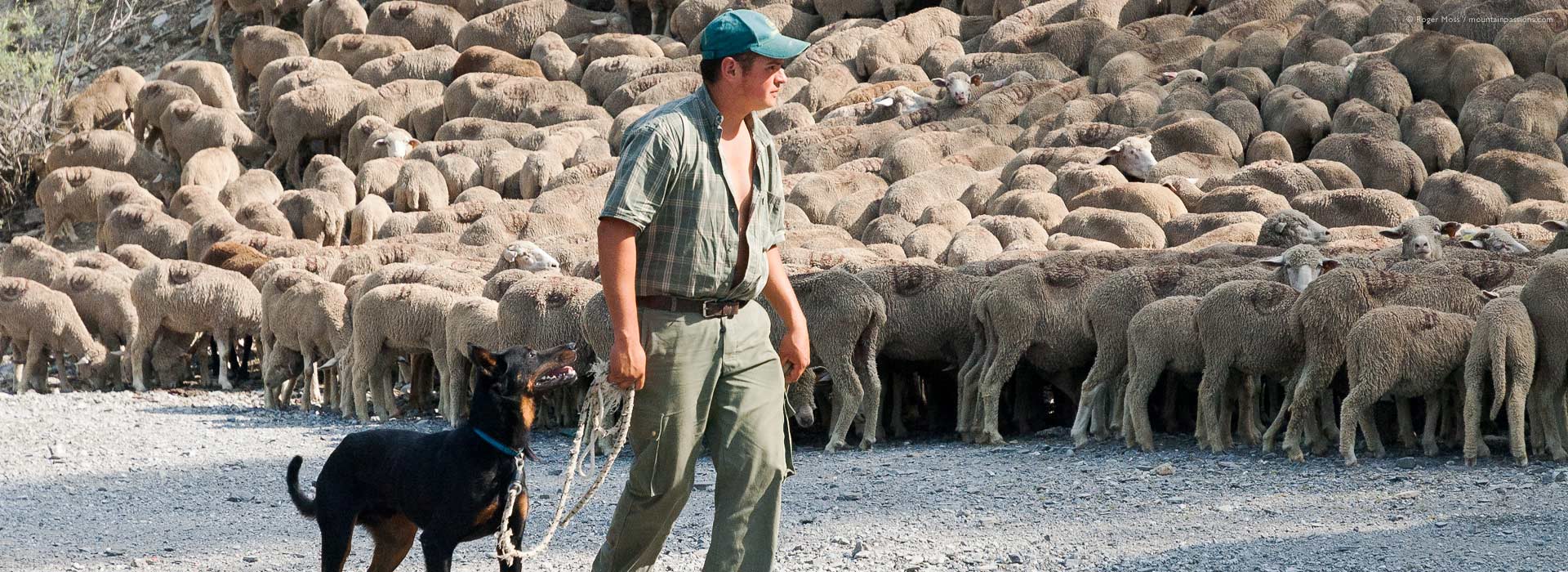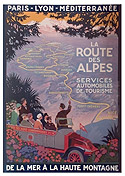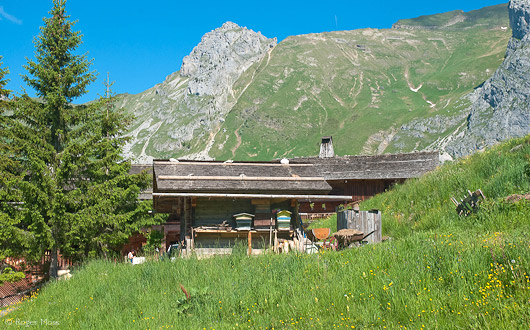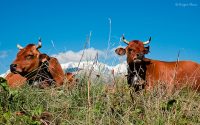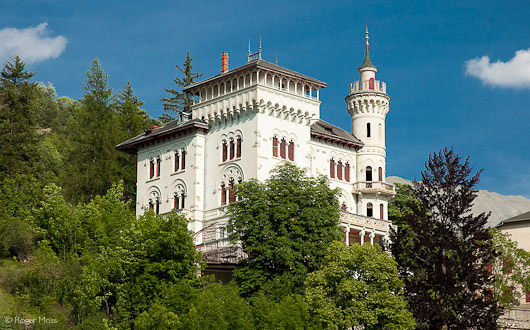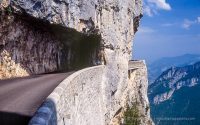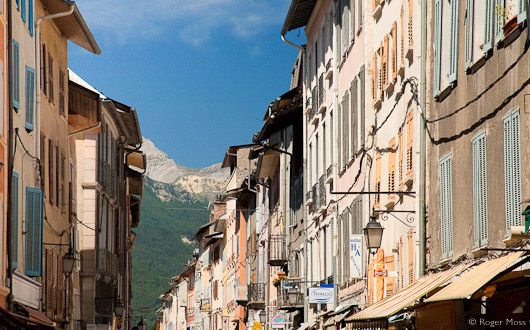Route des Grandes Alpes IV
The Col de Cayolle to Menton
We’re on the final stage of the Route des Grandes Alpes, a scenic touring itinerary following the mythical cols and valleys of the French Alps from Lac Léman to the Mediterranean sea. In this section we travel from the Col de Cayolle to Menton.
The ascent to the Col de la Cayolle (2327m) takes in a lofty stone bridge spanning a near-vertical mountain stream cascading over a boulder-strewn ravine. From the Col the views extend southwards over the Val d’Entraunes towards the Parc National du Mercantour and the Alpes Maritimes. As the Route descends through more hairpins and tunnels the influence of the Mediterranean becomes ever more obvious. If the tarmac is spotted with small black dots it’s an advanced warning that we might soon encounter a lone shepherd conducting his flock down from the high alpages to more sheltered winter grazing. The twice-yearly spectacle of transhumance is as moving as ever, and a timely reminder that this is still very much a living landscape.
Southern Alpine ski stations…
After passing through St Martin d’Entraunes and its near-neighbour Guillaumes we climb once again, this time up to the ski resort of Valberg, which greets hungry travellers with a welcoming ‘repas à tout-heure’ sign. Further on, as we cross the Col de la Couillole (1678m), we pass more modest family ski stations like Roubion, Buisses and La Colmiane. A dramatic swoop through the red stone Gorges de la Vionénet brings us to St. Sauveur-sur-Tinée, whose sinuous network of dark alleyways running between rugged, ancient cottages, represent a twilight world seldom discovered by tourists. Outside the town a tricoleur flutters proudly in the breeze above a small Ligne Maginot fort at the roadside.
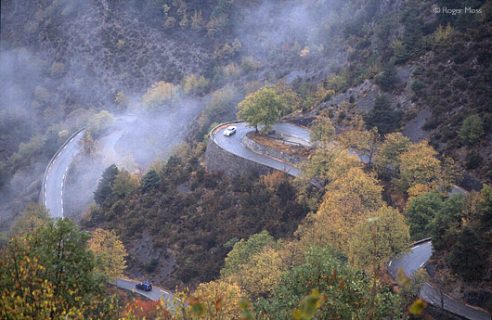
Mediterranean influences in Saint-Martin Vésubie
The intensity of the colours on the wooded, zigzag climb up to the Col Saint-Martin (1500m) is startling, and the descent down to St Martin–Vésubie turns out to be one of the narrowest and most demanding sections we’ve encountered on our journey. The Italianate village has a reputation as a climbing and mountaineering centre, acquiring the title of la Suisse-Niçoise among visitors from the Côte d’Azur. It has also steadfastly resisted over-commercialisation, with whole back-streets still awaiting the restorer’s attentions, while the unique 15th Century ‘gargouille’, created as an irrigation channel, still flows down the centre of rue Centrale.
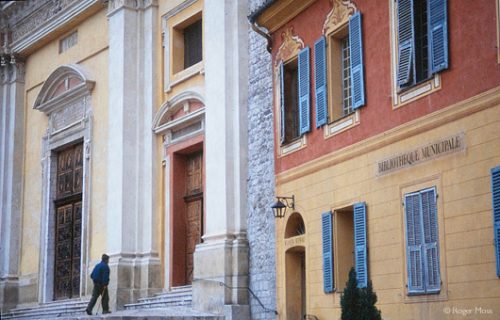
More high passes and deep gorges…
Below the village the Route relaxes briefly before spiralling upwards to the wooded Col de Turini (1604m), and another Corniche-style cruise through the Gorges du Piaon. Once through we plunge into Sospel, looking in many respects the classic Italian village. It’s also a place with a split personality; across the Bévéra river lies a medieval sector still accessed by an 11th Century toll bridge. Until the 18th Century revenues for the crossing, on the Route Royale between Nice and Turin, generated great wealth for the town. Eventually it created its very own sumptuous Baroque cathedral, dominating an elegantly-arcaded market square known as the Place St-Michel. So effectively is all this tucked away that most unsuspecting visitors simply pass through unaware of its existence.
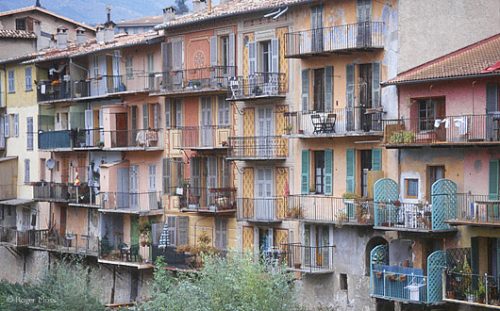
Menton: a rich reward…
The climb out of Sospel brings a first glimpse of olive groves, reminding us that we’ve almost reached journey’s end. As if to prove the point, the Col de Castillon is a relatively modest 706m above sea level. But the Route is not about to give up just yet, the run down towards Menton launching off in one last series of tight hairpins. Here and there are remnants of the tramway built to provide an excursion link with St Martin-Vésubie, before the private car made it redundant.
As we pass beneath the elevated coastal autoroute we’re finally entering Menton and an altogether different world. If the Route has provided any kind of a test then this is the reward, and it’s a rich one. Overlooking the Mediterranean, and just a few hundred metres from the frontier with Italy, this really is quite some town. The Italians think so, too, judging by the number of visitors driving in each day. After parking on the quayside it’s time to gaze across at the famous old town.
For us it was touch and go, but we made it before the winter snows closed the high Cols. Even in summer, however, the Route des Grandes Alpes is an adventure, revealing a near-endless succession of extaordinary places just waiting to be discovered – and rediscovered. 
